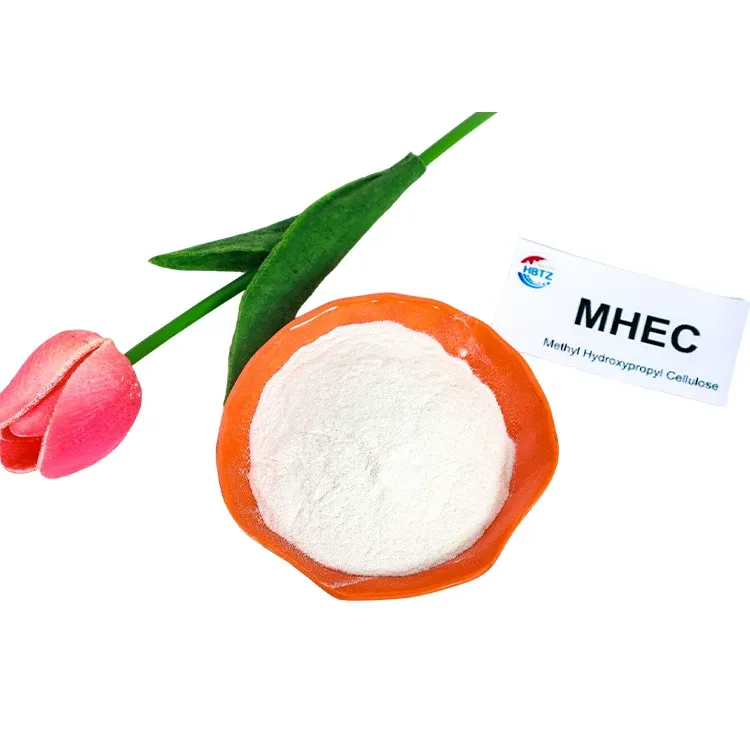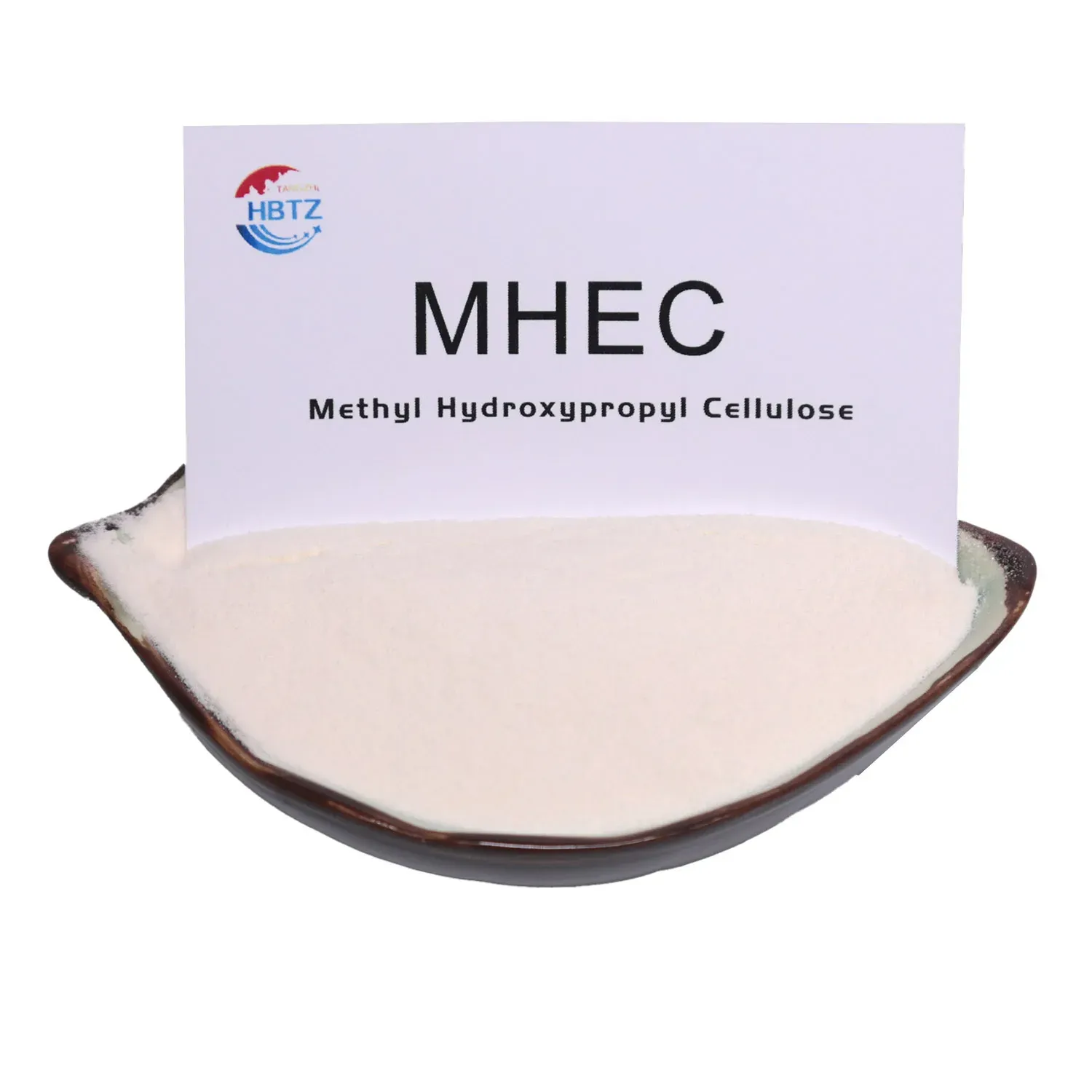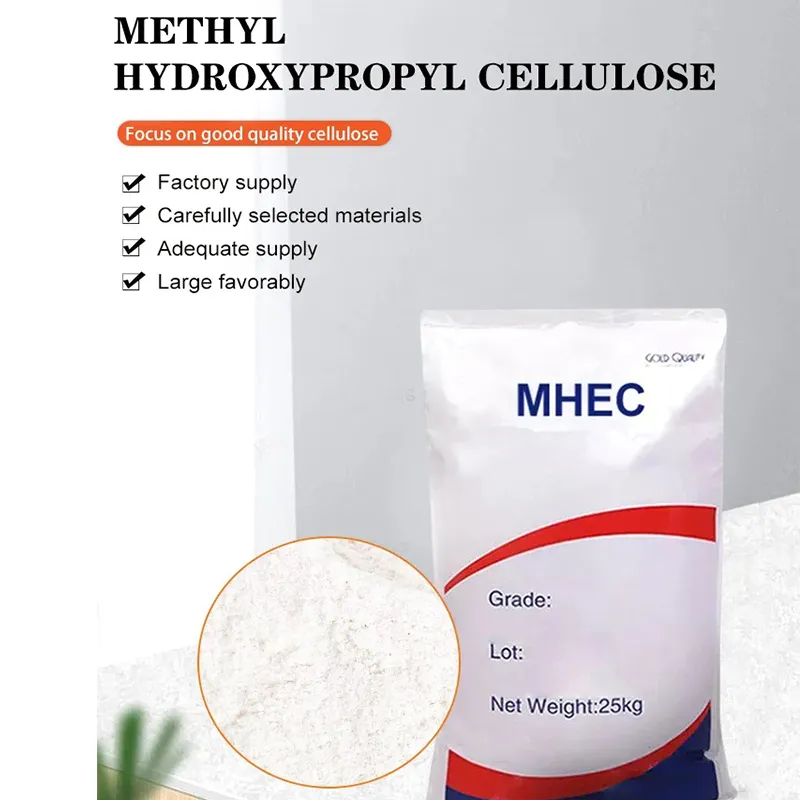
MHEC Cellulose: High-Purity Thickener, Stable & Affordable
Hydroxyethyl Methyl Cellulose (MHEC): what’s really driving the market right now
If you’ve been watching building chemicals and waterborne coatings, you’ve probably noticed the quiet rise of Mhec Cellulose. To be honest, it’s not flashy. But in mortar labs, paint kitchens, and even drilling mud rooms, it’s become the go-to thickener/water-retention workhorse. I’ve sat through enough plant trials to see why: predictable viscosity, forgiving mixing, and fewer jobsite complaints. That matters.

What it is (and what it does)
Hydroxyethyl methyl cellulose (CAS 9032-42-2) is a non-ionic, water-soluble cellulose ether. In practical terms, Mhec Cellulose thickens, stabilizes, and locks in water. In cement/gypsum mortars it boosts open time and trowelability; in latex paints it tunes KU and sag balance; in inks it stabilizes pigment; in oilfield drilling it helps with rheology and fluid loss. Origin for the product featured here: Room 2308, Dongsheng Plaza 2, No. 508 Zhongshan East Road, Chang’an District, Shijiazhuang, Hebei, China.
Typical specifications
| Parameter | Typical value (≈) | Notes |
|---|---|---|
| Viscosity, 2% sol., Brookfield LV, 20°C | 20,000–80,000 mPa·s | Real-world use may vary with shear and salts |
| Moisture | ≤5.0% | Dry-basis |
| pH (1% sol.) | 6.0–8.5 | Non-ionic; broad compatibility |
| Methoxy content | 19–24% | Impacts gel temp and water retention |
| Hydroxyethyl content | 4–12% | Improves salt tolerance |
| Residue on 80-mesh | ≤2% | Granulation impacts dissolution |

From pulp to powder: process and QC
Starting with refined cellulose (often wood-pulp derived), the process includes alkalization, etherification with methyl chloride and ethylene oxide, neutralization, washing, drying, milling, and sieving. The knobs engineers turn: substitution levels (DS/MS), particle size, surface treatment (for anti-lumping), and moisture. Each lot of Mhec Cellulose is typically checked by Brookfield LV/Spindle 3–4 (ISO 3219 context), gel temperature, moisture (oven), ash, sieve residue, and solution clarity.
Testing standards used by serious buyers: EN 1015-7 water retention for mortars, EN 1346 open time and EN 1308 slip for tile adhesives, ASTM D562 KU viscosity and ISO 11998 scrub for paints, and API RP 13B-1 style rheology for drilling muds. Service life: around 24 months in original sealed bags, stored dry below 30°C. I guess that’s conservative but safe.
Where it’s used (and how much)
- Tile adhesives (C1/C2): 0.20–0.60% on dry mix; target water retention ≥98% (EN 1015-7).
- Gypsum plaster & putty: 0.10–0.40%; improves spread and anti-sag.
- Self-leveling compounds: 0.05–0.20%; low-vis grades to avoid air entrapment.
- Latex paints: 0.20–0.50%; tune KU and ICI; watch co-solvent interactions.
- Printing inks: 0.10–0.40%; pigment stability without excessive stringiness.
- Oil drilling: 0.20–1.00%; rheology and fluid-loss assistance depending on brine.

Real-world data from recent trials
- Tile adhesive (C1T, 0.30% MHEC): water retention 98.5% (EN 1015-7); open time ≥30 min (EN 1346); slip 0.3 mm (EN 1308).
- Interior matte paint (0.35% MHEC): KU rise 95 → 106 (ASTM D562); sag improved from 10 mm to 12 mm bars (ASTM D4400); scrub class per ISO 11998 moved up one tier. Many customers say the can feels “creamier,” which sounds trivial—until callbacks drop.
Advantages and current trends
What’s trending? Lower-VOC paints favor cellulose ethers over some associative thickeners; dry-mix producers want longer open time without slump; and contractors, frankly, want fewer surprises with water demand. Mhec Cellulose hits that sweet spot: robust water retention, steady viscosity, broad pH tolerance, and good salt compatibility. Surprising but true—small tweaks in substitution can unlock big differences in feel.
Vendor snapshot (what buyers compare)
| Vendor type | Certifications | Lead time | Customization | Tech support | Price level |
|---|---|---|---|---|---|
| Tangzhi (China, manufacturer) | ISO 9001/14001; REACH-like docs | ≈2–3 weeks | Viscosity, particle size, surface-treated | Formulation lab input | Competitive |
| Global premium brand | ISO/REACH/RoHS full | ≈3–6 weeks | Broad grade map | Extensive, on-site | High |
| Regional trader | Varies | Stock-dependent | Limited | Basic | Low–mid |
Customization and support
Ask for tuned viscosity windows (e.g., 30k/45k/60k mPa·s at 2%), surface treatment for fast wet-in, and granulation matching your mixers. For mortars heavy in limestone filler, a slightly higher hydroxyethyl content can stabilize water better—little insider tip.

Quick case notes
- Dry-mix plant, Middle East: switched to Mhec Cellulose 45k grade, dosage 0.28% → open time +8–10 min; call-backs dropped by “a lot,” their words.
- Coatings maker, Central Europe: blended mid-vis MHEC with a dash of HEUR; achieved higher ICI without roller spatter. Production said, “finally consistent.”
Certifications & compliance: ISO 9001 quality systems; ISO 14001 environmental management; safety data sheets (GHS). Many buyers also request REACH and RoHS statements. Sensible, in fact.
Bottom line
If you need dependable water retention and application “feel,” Mhec Cellulose remains a smart, cost-balanced lever across mortars, paints, inks, and drilling. Not glamorous—just effective.
- EN 1015-7: Methods of test for mortar for masonry – Determination of water-retention value.
- EN 1346/EN 1308: Adhesives for tiles – Determination of open time and slip.
- ASTM D562/D4400 and ISO 11998: Viscosity, sag, and wet scrub resistance for coatings.
- ISO 3219: Rheology – Determination of viscosity using rotational viscometers.
-
Reliable Powdered Cellulose Supplier: Quality, Sustainability & InnovationNewsNov.24,2025
-
Find Trusted Microfibrillated Cellulose Suppliers for Sustainable Industrial SolutionsNewsNov.24,2025
-
Leading Methocel Suppliers: Quality, Innovation & Sustainability in Methylcellulose SupplyNewsNov.23,2025
-
Reliable Hydroxyethylcellulose Suppliers for Industry & Sustainability | Tangzhi HPMCNewsNov.23,2025
-
Top Ethyl Cellulose Supplier – Quality, Sustainability, and Industrial SupportNewsNov.23,2025
-
Trusted CMC Powder Suppliers for Food, Pharma & Industrial Use | Tangzhi HPMCNewsNov.22,2025





















